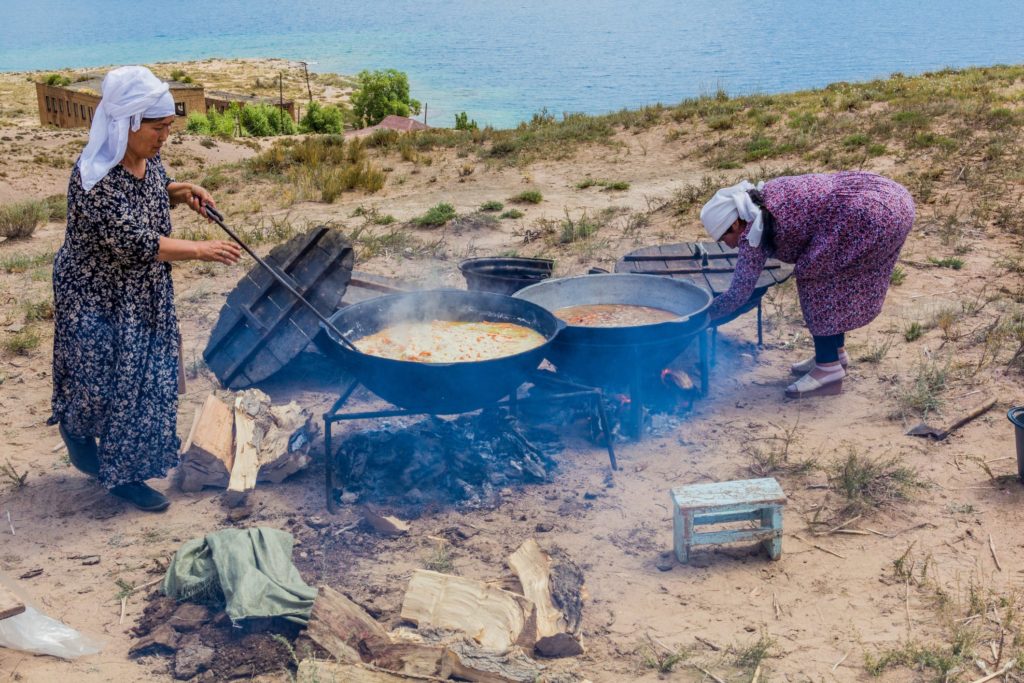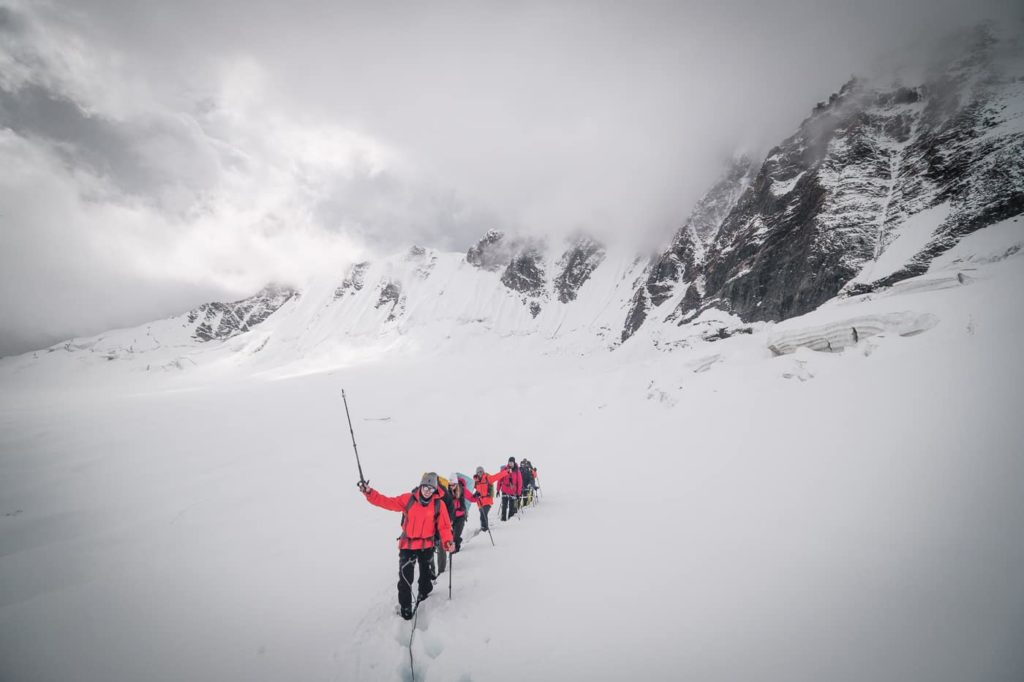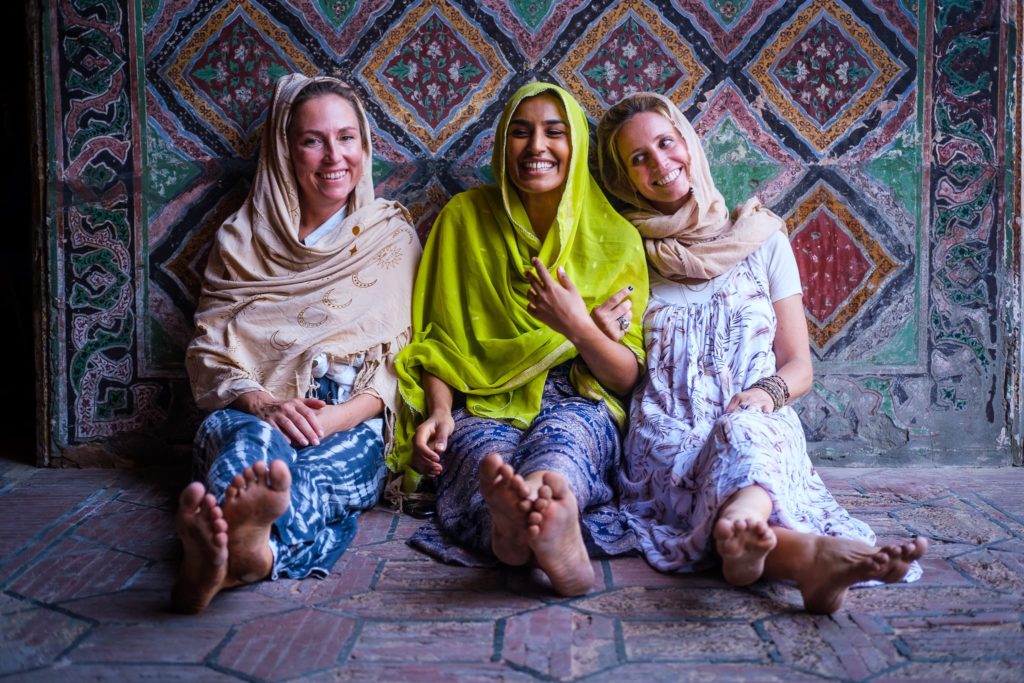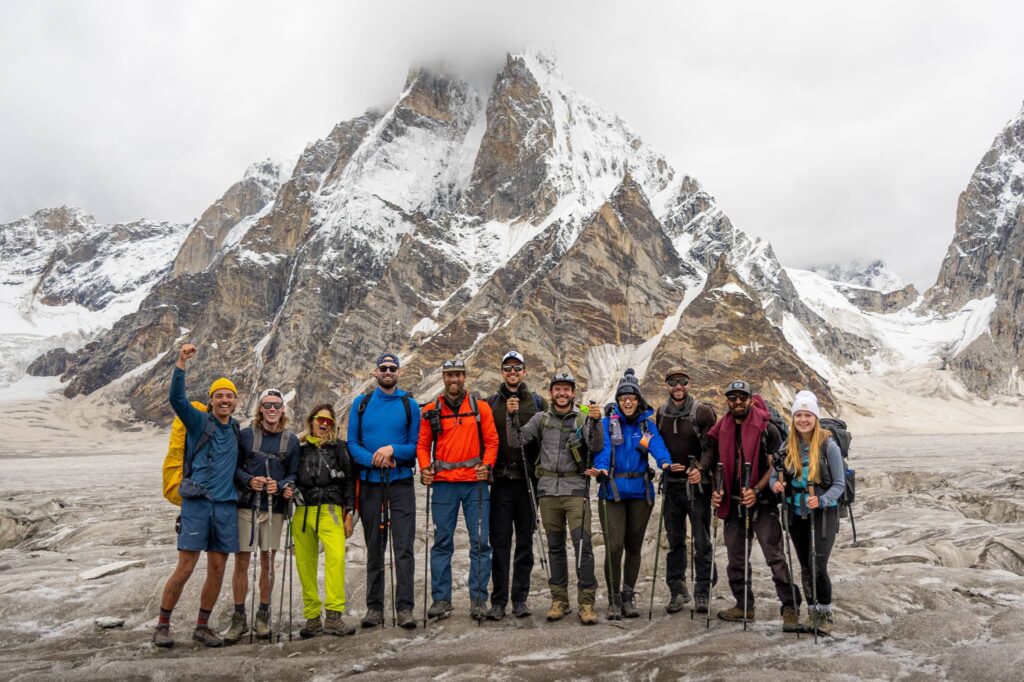Kyrgyzstan is mostly known for its epic landscapes and nomadic culture.
But what about the food in Kyrgyzstan? Is it good enough to warrant consideration whilst planning a trip to this incredible country?
And what about vegetarians? Are they going to be able to survive this country or forced to live off of rice and bread every single day?
Good news and more good news everyone: the food in Kyrgyzstan is good and features plenty of vegetarian-friendly options (given a few caveats, of course).
In this Trip Preparedness blog post, I’m going to cover what kinds of dishes you should eat while visiting Kyrgyzstan and where to find the best versions. Special attention is paid to vegetarians in certain sections as well.
Let’s dive in already! Tamagyngyz daamduu bolson!
What is Kyrgyz Food Like?
Food in Kyrgyzstan can vary greatly depending on where you are.
In Bishkek, there will be a respectable diversity — international restaurants are plentiful and are of high quality. Somewhat surprisingly, the Indian food in Bishkek is particularly good.
In the more remote parts of the country, Kyrgyz cooking is more traditional.
Classic Kyrgyz cuisine is very filling — there will be a lot of bread, dairy, soups, and red meat. Spicing is often simple, the exception being around the Dungan enclaves of Issyk Kul. Vegetables are generally hearty and include potatoes, dark greens, and roots.
Kyrgyz people love to offer sweets and jams at the end of every meal. Kumis (fermented mare’s milk) may also be offered. It is a very strange drink and we encourage going outside comfort zones to try it. Hosts will not be offended if you say no.
Food whilst camping will be the best possible quality, but please have realistic expectations of what camp cooks can deliver. On some occasions, especially when trekking to Ala-Kul, there may have special opportunities: some entrepreneurial locals pack wine and vodka up to the high camps and sell them (for reasonable prices).
What Does a Typical Day Look Like?
Below is a list of what sort of food you can expect on a typical day whilst on a cultural exploration with us in Kyrgyzstan:
- Breakfast: fried eggs, porridge, jam, sweets, bread, cheese, milk, tea, coffee
- Hotel/yurt stay lunch: soup course, rice, veggies, meat, some sort of salad, pasta, tea.
- Trekking lunch: usually an array of finger foods e.g. cheeses, charcuteries, canned fish, bread, sandwiches, salads, more sweets.
- Dinner: larger meals, rice, stews, grilled meats, bread, salads, sweets
Is Vegetarianism Possible in Kyrgyzstan?
Central Asia has a reputation for being a carnivorous region. In truth, meat does make up a very large portion of the local diet.
That being said, there are enough vegetarian options on offer in Kyrgyzstan to make most vegetarians happy.
Produce is very high quality in Kyrgyzstan. In fact, the country is considered by many to be a fertile region rather than a frigid wasteland on the Steppes. Fresh fruits and vegetables are easily found at local stalls and bazaars — in our experience, everything tastes great as well.
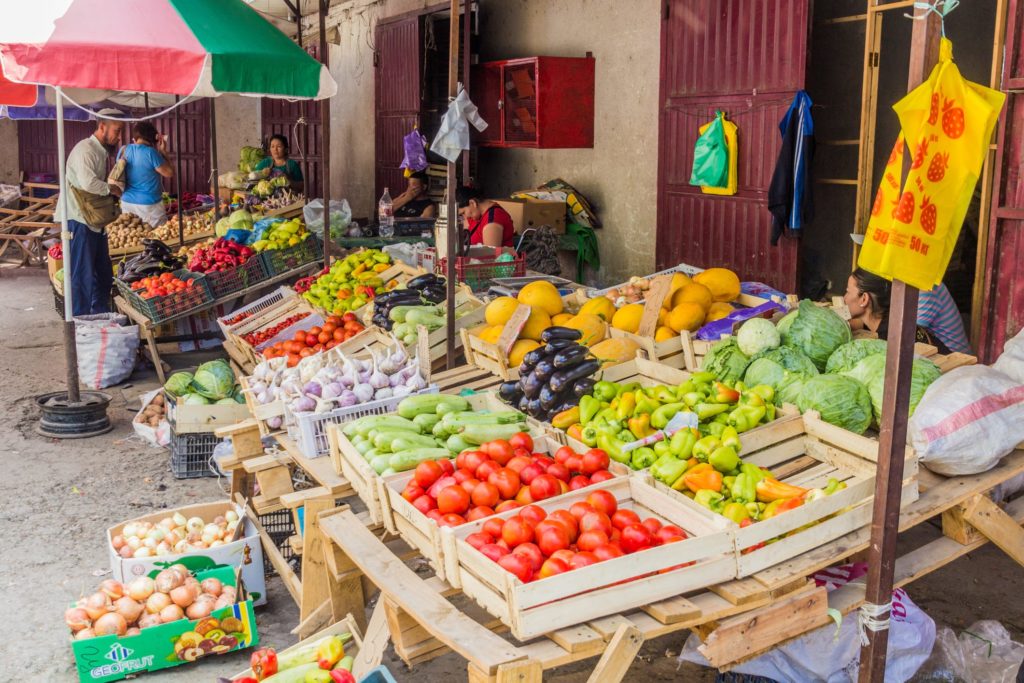
Aside from the delicious bread and fruits, salads will be most vegetarians’ go-to dish. There is a great array of salads commonly served in Kyrgyzstan, from Korean-style cabbage salads to savory Russian salads, the latter of which is actually referred to locally as “Italian salads”.
For a little extra flavor, vegetarian shashlik is also a treat. Think shish kebab made with potatoes, onions, peppers, and so on.
So in short, yes, it is possible to visit Kyrgyzstan as a vegetarian. You may actually find that you enjoy your stay more so than the meat-eaters! Day after day of shorpa and shashlik eventually takes its toll.
Famous Kyrgyz Dishes
Below are some of the most well-known foods in Kyrgyzstan. Be sure to try as many possible when you visit!
Beshbarmak

Kyrgyzstan’s national dish. Also called Five Finger Noodles.
Slowed-cooked horse meat served in its own broth poured over thick-cut noodles and topped with fresh herbs.
Can be a messy dish as the proper way to consume is often with one’s own hands (thus the “five fingers” name). I’ve seen variations of this with mutton and sometimes beef. A simple, hearty dish that is a must-try in Kyrgyzstan.
Shorpo
Aka “the most heavenly soup you can possibly imagine”.
Mutton or beef on the bone slowed cooked for ages in a hearty broth. The meat eventually becomes super tender and literally falls off the bone.
Sometimes, garnishes are added, like potatoes, vegetables, and herbs. I had a shorpa once in Karakol made with ram’s fat, which tasted like extra-smokey bacon and was a real delight.
Shorpo is originally a Persian dish that made its way to Central Asia. By now, it’s pretty ubiquitous in the region. Great for warming you up on a cold day in the jailoos or beating a wicked hangover.
Manty
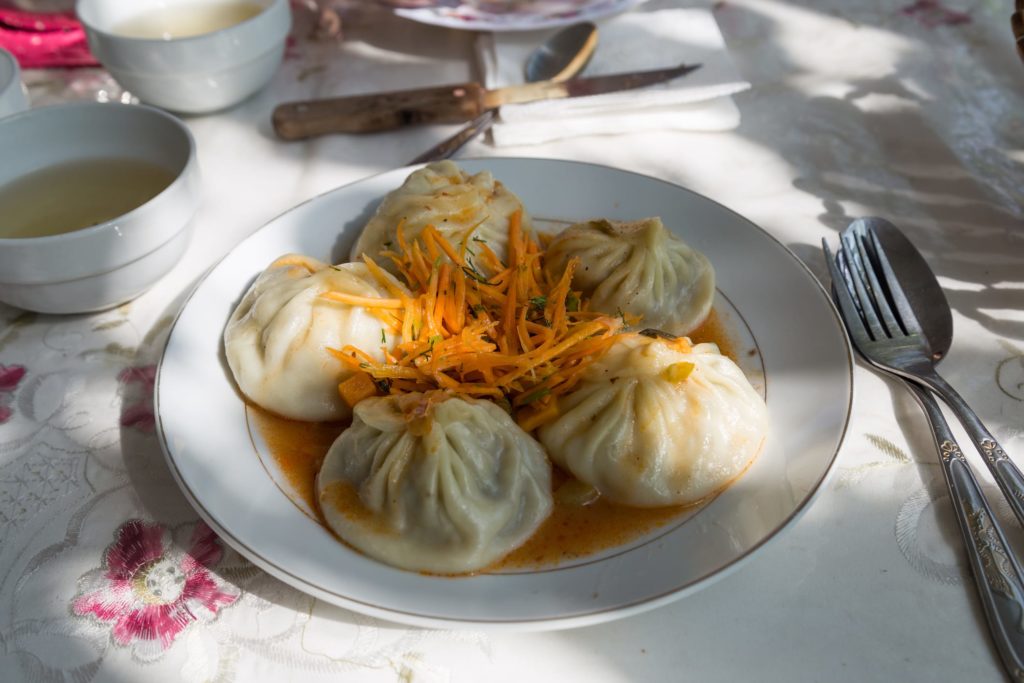
Central Asian meat dumplings that very much resemble the ones you might find in China or Turkey. The history of this dish is a bit murky but most agree that the Central Asian variety is as good as any other.
Often made with mutton or beef and onion or squash. Always ask for a side of achuu (chili) and maybe some yogurt to go along with your manty.
Manty is very convenient and can be eaten as a meal or snack. When I’m at a roadside cafe and not sure what’s available, I always choose the manty. There always seems to be some on hand and a patron enjoying some.
NOTE: Achuu means “spicy” in Kyrgyz and usually refers to a local chili paste. Ask for it with your meal for a little extra kick.
Laghman
Noodles served with stir-fried vegetables, meat, and spices. Noodles are made by hand – specifically, they are “hand-pulled” – and are a little thicker than spaghetti.
Laghman is originally a Uygur/Dungan (Western China) dish but has become very popular in Central Asia, especially Kyrgyzstan. Being a Dungan enclave, laghman is very often served in Karakol. The best places to eat it are at a local’s home if you can manage to get invited.
Laghman can be served in a variety of ways. Bozo laghman (fried) is very common and pretty damn delicious. Laghman can also be served in a broth but I find it less enjoyable. Ashlan Fu is better in that regard.
Shashlik
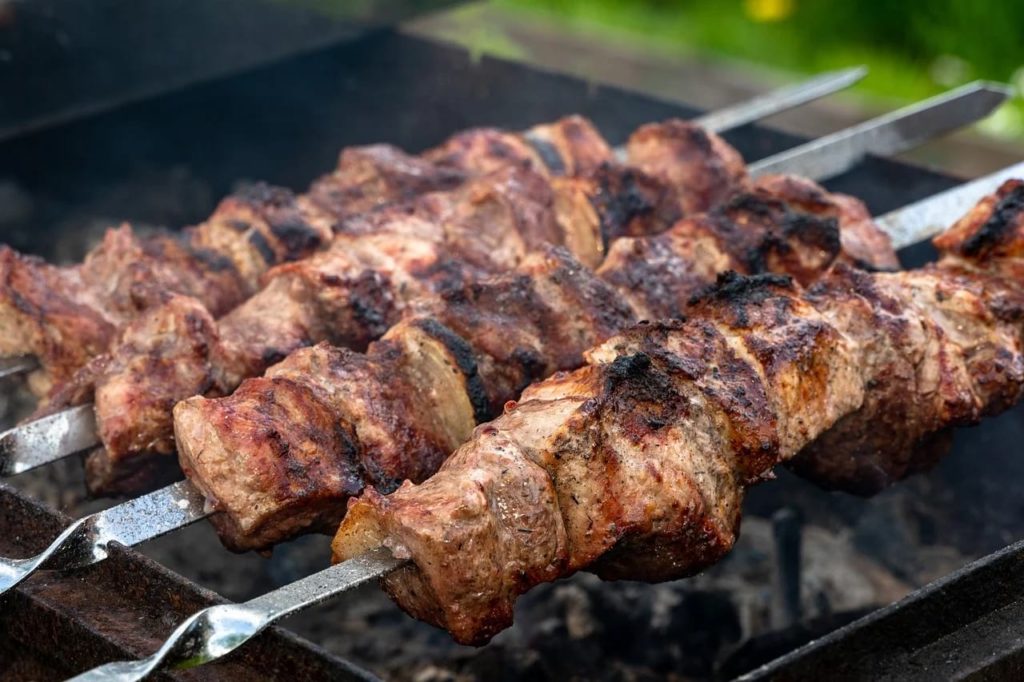
A Russian-Caucasian version of the legendary kebab. Usually made using beef or lamb although chicken and vegetarian options are becoming increasingly common.
I’m not sure what it is about shashlik but I think that it is one of the finest versions of the grilled, skewered meat anywhere on the planet. In my personal experience, the local, hidden joints usually do it best.
Spicing is simple but effective. Salt, pepper, onion powder, and sometimes curry are used to maximize flavor. The cuts of meat themselves are usually quite large but oh so tender.
Chechil
Sinewy cheese that is braided together into a rope-like shape, which is then pulled apart to consume. Often eaten as a side with a cold beer, thus a lot of Kyrgyz people call it “beer cheese”. So think string cheese for adults.
The standard version of chechil has a smokey flavor and tastes a lot like scamorza or smoked gouda. There are lots of different varieties that come with different flavorings as well though. Chili is a personal favorite of mine.
Chechil is originally from the Caucasus and is much loved in Armenia. It is also very popular in Eastern Europe, Russia, and the rest of Central Asia.
Samsa
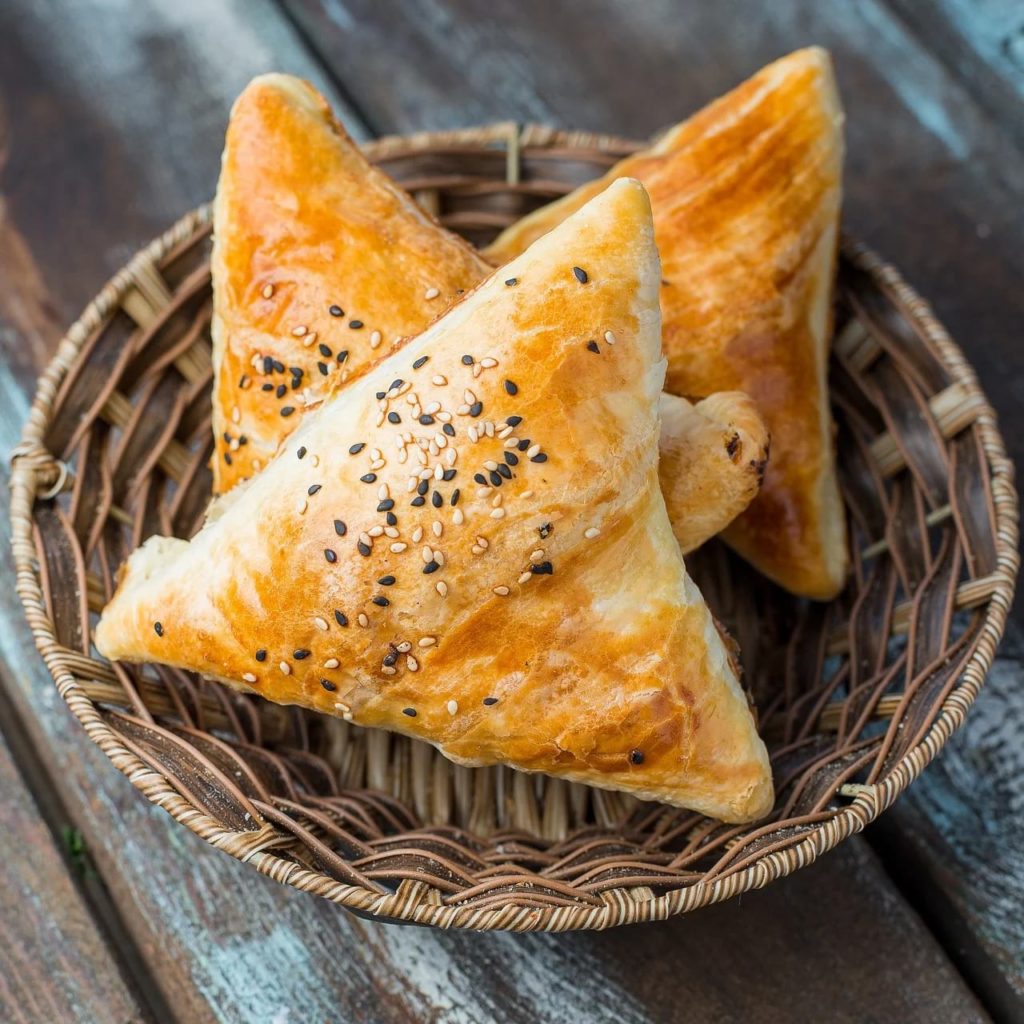
Central Asia’s take on the ubiquitous and much-loved pastry. Often filled with minced red meat and hearty vegetables such as onions and potatoes. Usually baked, sometimes fried.
Samsa is arguably the ultimate Kyrgyz street food. Most vendors sell these out of a small kiosk or the window of a bakery to-go. Bazaars are a great place to start looking.
If you want the absolute best though, head to Osh, which is particularly well-known for its samsa.
Ashlan Fu
Not to be confused with Laghman. Though it sometimes uses laghman noodles, Ashflan Fu is its own dish.
Ashlan Fu is served in broth and almost always cold. Toppings include peppers, meat or eggs, and plenty of vinegar. Think hot and sour soup but the Kyrgyz version. Vegetarian options are usually available as well.
Being a Dungan dish, Ashlan Fu is most commonly found in Karakol. A bowl should cost no more than a dollar or two.
A lot of people think that this Kyrgyz dish is the ultimate hangover cure. I’d rather resort to a shorpo myself but to each his own!
Ready to discover the Celestial Mountains?
Kumis
The original nomadic beverage that is as culturally significant as it is hard to drink. No trip to Kyrgyzstan is complete without trying at least a sip of this legendary beverage.
Kumis is fermented mare’s milk that is made first by heating the milk at low temperatures and then churning it for an extended period of time. The process yields bacteria, which then leads to the production of alcohol. The alcoholic content of kumis is about that of a beer (5%).
The flavor of kumis is, for a lack of better terms, strange. The body is light but the taste is quite sour with a noticeable, fermented “zing” sensation. The first sip can be a real shock but as someone who drank quite a bit of it, the flavor grows on you (slowly).
Kumis is offered to guests and is regularly consumed at large gatherings such as weddings. Be aware that drinking too much kumis often leads to loss of bowel control i.e. you’ll be shitting your pants. Drink with caution!
Kumis is not just consumed in Kyrgyzstan, but also in Kazahkstan and Monglia. It’s a uniquely indigenous item among Asiatic nomadic people and a remnant of the old days when entire communities used to roam the steppes.
Paloo
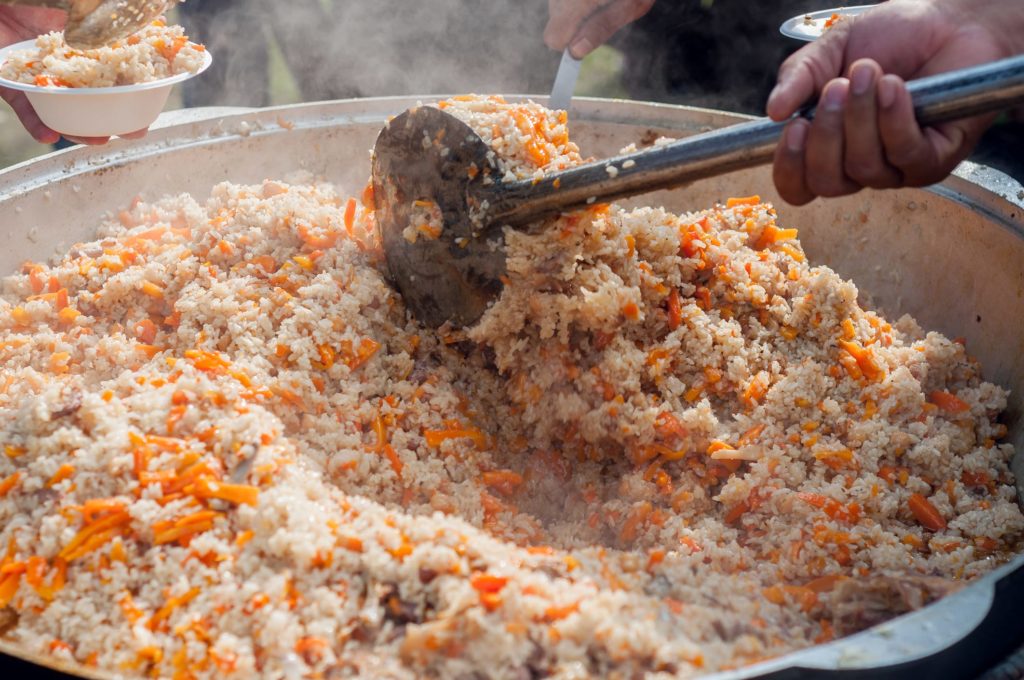
The Kyrgyz version of plov or rice pilaf. Usually made with pieces of meat, carrots, onions, and spices. Sometimes dried fruits are added to mix things up a bit.
The best plov is in the south where the Uzbek influence is greatest. Uzbekistan is without a doubt the real champion when it comes to the rice dish but you can find perfectly acceptable versions anywhere in the Kyrgyz part of the Fergana Valley. Osh is obviously the best place to start.
Soups and stews
You can’t go wrong with a good ol’ fashioned bowl of slow-cooked anything. Especially in colder nations like Kyrgyzstan where robust broths and thick stews are great for keeping away the cold.
Aside from the previously-mentioned, divine shorpo, here are some other popular stews and soups frequently found in Kyrgyzstan:
- Kuurdaak – A Kyrgyz classic. Stewed meat and vegetables. I’ve seen a lot of restaurants labelling this dish as “goulash” perhaps to make it more recognizable to foreigners. Kuurdaak is the real name though. Be aware that authentic Kuurdaak can contain some pretty gnarly pieces of meat, like the entrails.
- Dimlama – Hearty, stewed vegetables. Sometimes made with meat but can easily be left out. One of the best dishes for vegetarians visiting Kyrgyzstan.
- Borsch – Wouldn’t be a true post-Soviet nation without Russia’s most famous dish right? Slow cooked beet soup with lots of cabbage and other vegetables. BE AWARE VEGETARIANS: borsch is often made with beef broth so it’s not 100% vegi.
Bread
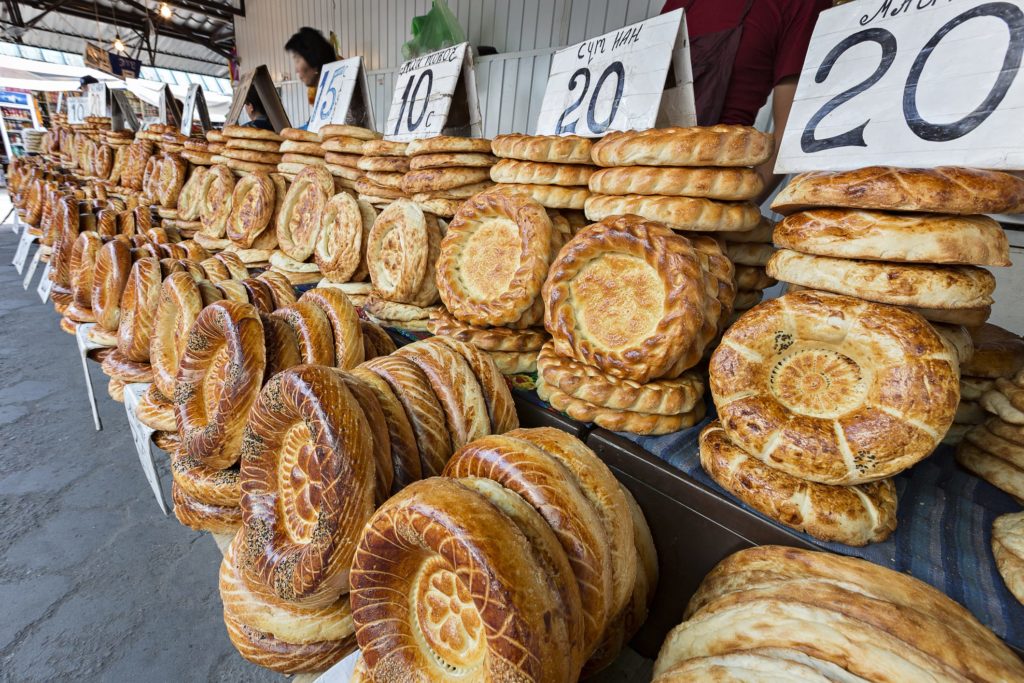
Bread is a huge staple of the Kyrgyz diet and is served at almost every meal as well as a welcome to guests.
The most common type of Kyrgyz bread is called lepyoshka or Tandyr nan. It’s round, with a smooth crust, and dense (not hard) interior. Lepyoshka isn’t baked inside an oven either – rather it’s made in a pan and placed upside down on top of the stove.
Another common type of bread you’ll see eaten often in Kyrgyzstan is called boortsog. These are fried balls of dough and are usually served with soups and jams. They’re like beignets without so much powdered sugar.
Horse
Yes, horse is used even as a source of meat in Kyrgyzstan and has been for generations. Though it may seem a little strange to eat such a creature, it is perfectly normal here. In fact, it’s a delicacy!
If it makes you feel any better, horse meat can taste pretty good as well. It’s often sliced into thin fillets or shredded first and then served as an ingredient in other dishes. It has a deep, almost purplish color and is a bit tougher than other meats. I’ve had horse meat in shorpo and beshbarmak and it doesn’t taste off at all.
TL;DR if you’re a carnivore, don’t be afraid to try some horse while visiting Kyrgyzstan!
The Best Places to Eat in Kyrgyzstan
There aren’t many culinary centers in Kyrgyzstan outside the two largest cities (Bishkek and Osh). Regardless of whether you’re in the city or out in the middle of nowhere, there’s always the chance of stumbling upon a hidden gem.
Here are some good places to start if you’re looking for some tasty food in Kyrgyzstan:
Bishkek
- Navat – Kyrgyz cuisine. Probably the one place that every foreigner visits when they spend time in Bishkek. For good reason too: the food is authentic and usually of a high quality. I recommended just about everything on the menu. Note that Navat is actually a chain of restaurants – the location on Togolok Moldo Street is consistently good though.
- Papa Rotti – Bishkek features some very good Pakistani and Indian food, courtesy of the large diasporas here. Papa Rotti is my favorite place to get some. The food here is authentic and pretty damn close to what I actually get when I visit Pakistan. Karais and handis all day!
- Furusato – Whilst it may sound absurd for the country which is the furthest from any ocean in the world to have good sushi, this place challenges expectations. Firstly, the ambiance here is spot on and really feels like a Japanese restaurant. Secondly, the food is actually quite good. Granted, I didn’t order any sashimi but the rolls were solid. Give it a shot whilst you’re out exploring Bishkek.
- Chicken Star – A pretty unassuming joint that actually makes some incredible Korean-fried chicken. The restaurant itself has a hipster-like vibe and I usually see a lot of expats and digital nomads types when I visit. The standard chicken lunches are the way to go.
- Vanilla Sky Coffee – A very elegant coffeehouse that could fit right in Paris or even Vienna. The coffee here was legit and the pastries were also exceptional. This is a great place to have a business meeting or even a date (if you’re one of the lucky ones).
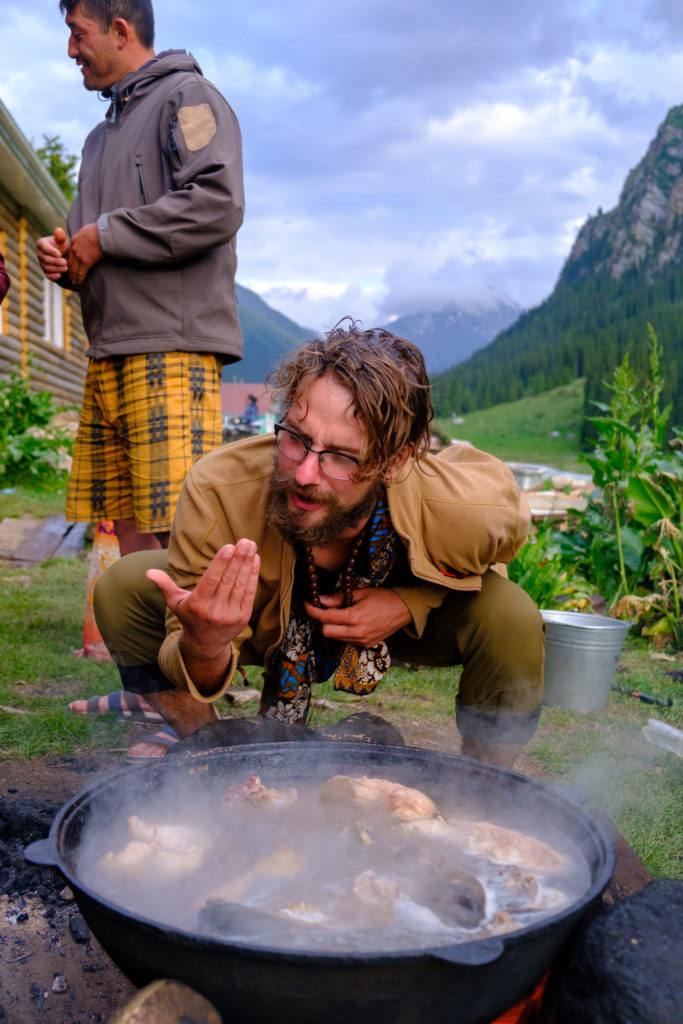
Karakol
- Cafe Dastorkon – Similar to Navat in culinary options and quality. Offers probably the most varied menu in the city and includes everything from Dungan food to shashlik to even some Western options. Sit outside in one of the booths on a hot night. Hookah and spirits are also available.
- Big Hoshan – Samsas! A great place to drop by for some quick, filling snacks. Expect lots of oil though.
- Kafe Aychurok – A local restaurant that barely registers on the map for most people. EBT co-founder Chris and I found this place whilst exploring Karakol one day and think that serves the best shashlik ever. Doesn’t offer much else though besides a few salads and noodle dishes. Buy some beer and bring it with you.
Osh
- Cafe Brios – The best and really only place to work as a digital nomad in Osh. The coffee here is legit and the food is also quite nice. Nothing too crazy, just the usual cafe fare like soups and sandwiches.
- Kurmanzhan Datka Cafe – One of the few legit restaurants in Osh. Offers a mix of local and international food.
- California Cafe – Nothing to write home about in terms of quality of food but the theme will be much appreciated by those homesick travelers. Decent beer selection and pizza was better than expected. We smashed a couple of each after our big trek in Kyrgyz Patagonia in 2019.
Kochkor
- Fatima’s – Fatima is a local legend in Karakol. Besides having a very cool souvenir shop, which offers everything from felt products to taxidermy, she is also an amazing cook. She’ll host groups either in a yurt located next to her shop or in her home/guesthouse. In either case, prepare for a feast that would normally be reserved for Russian royalty.
Join us in Kyrgyzstan for more culinary delights!
Epic Expeditions prides itself on crafting the most well-rounded trips possible. That includes not only where we go and what we do but what we eat as well.
Join us on a trip to Kyrgyzstan and you’ll have the opportunity to try all of the above! The shashlik will be sizzling, the bread hot of the oven, and the jams will be to die for. (Seriously, one former guest would’ve killed for the local jam.)
To find out more about our trips, visit the official Kyrgyzstan page here.

